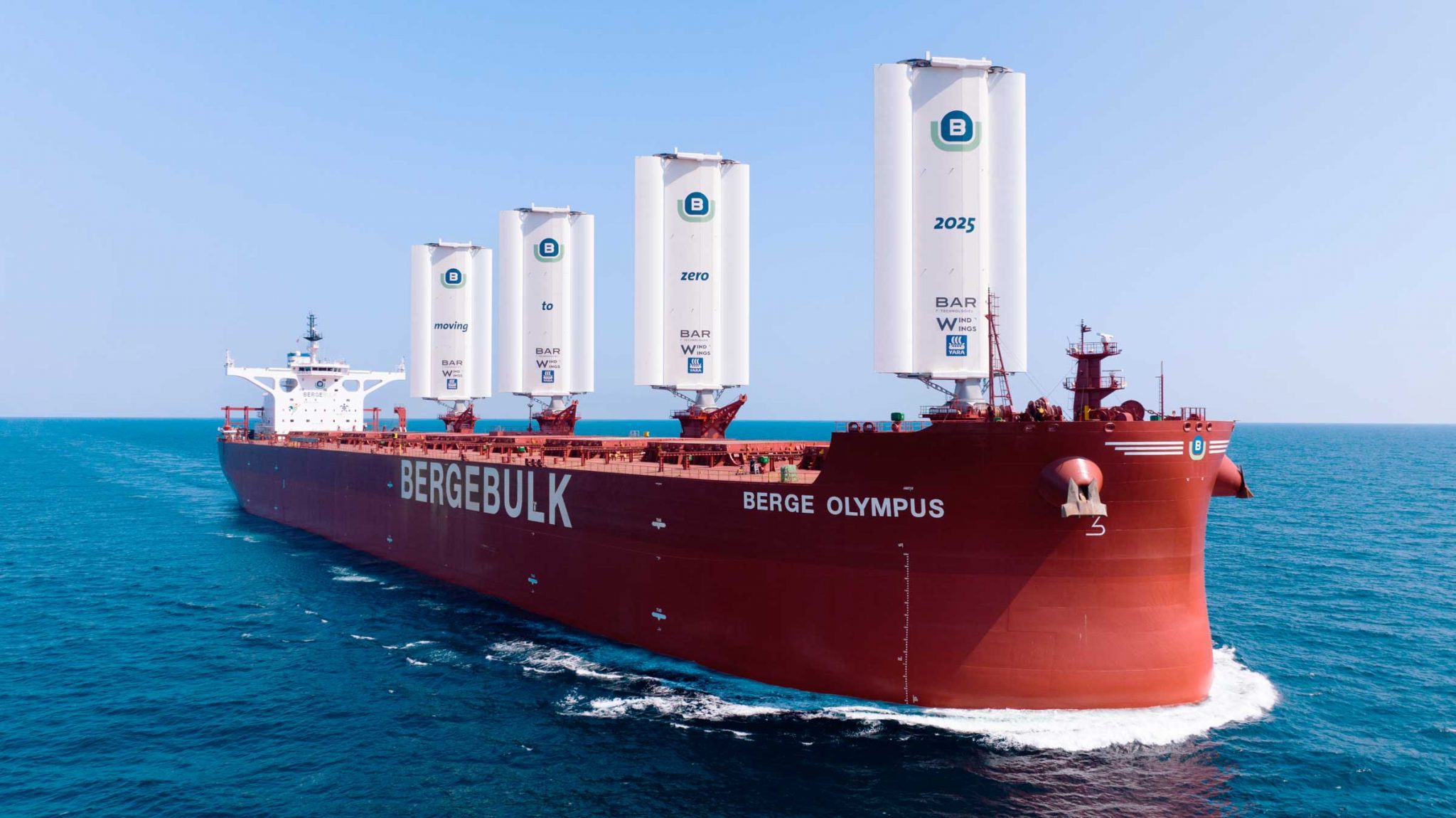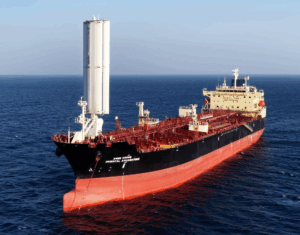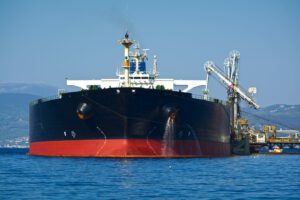Singapore-based dry bulk owner Berge Bulk unveils its retrofitted newcastlemax bulker, Berge Olympus, which is equipped with four BARTech WindWings by Yara Marine Technologies that use wind power to reduce fuel consumption and CO2 emissions.
The WindWings installation is part of Berge Bulk’s ambition to become carbon neutral by 2025, and marks the Berge Olympus as the world’s most powerful sailing cargo ship.
With four WindWings installed, the Berge Olympus will save six tonnes of fuel per day on an average worldwide route and, in the process, reduce CO2 emissions by approximately 19.5 tonnes per day.
With these fuel savings and CO2 reductions, Berge Bulk is evaluating the potential of installing WindWings on more of its vessels that trade on routes with favourable wind conditions.
Berge Olympus will sail between Brazil and China — a trade route known for having favourable wind conditions.
Each of the four WindWings is 20m wide and 37.5m tall, which is taller than a 10-story building.
The total surface area of the four wings is 3,000m2, which is more than three times the surface area of the wings of an A380 airplane (843m2).
In accordance with Berge Bulk, the WindWings can save up to 20% fuel, reducing CO2 emissions by 19.5 tonnes per day on an average worldwide route.
Furthermore, the WindWings are expected to achieve “double digit percentage reduction in fuel and CO2.”
In addition to the installation of the WindWings, Berge Olympus has been retrofitted with a shaft generator system. The shaft generator is driven by the main engine to supply electric power to the vessel, thus saving fuel and reducing emissions. With a 1MW capacity, it is sized to eliminate the need to operate auxiliary engines while at sea.
James Marshall, chief executive of Berge Bulk said: “At Berge Bulk, we are constantly striving to enhance our efficiency and reduce the environmental impact of our existing fleet. From 2008 until today, we have achieved a remarkable 46% reduction in our CO2 emissions per tonne mile, already surpassing the 2030 IMO target for reducing carbon emissions intensity.”
John Cooper, chief executive of BAR Technologies, noted: “We’re immensely proud to be spearheading wind-assisted propulsion through the development of WindWings and through our shared vision with Berge Bulk to launch the world’s most powerful sailing cargo ship. We cannot afford to stand still in developing sustainable solutions for the shipping industry. We believe there is more to be done to harness wind power and push shipping into a greener, and more efficient era. To that end, we are already working on superior hydrodynamics and new types of accommodation blocks with several vessel designers.”
Thomas Koniordos, chief executive of Yara Marine Technologies, said: “Wind-assisted propulsion has the potential to offer immediate long-term solutions for shipping’s pathway to Net Zero.”



